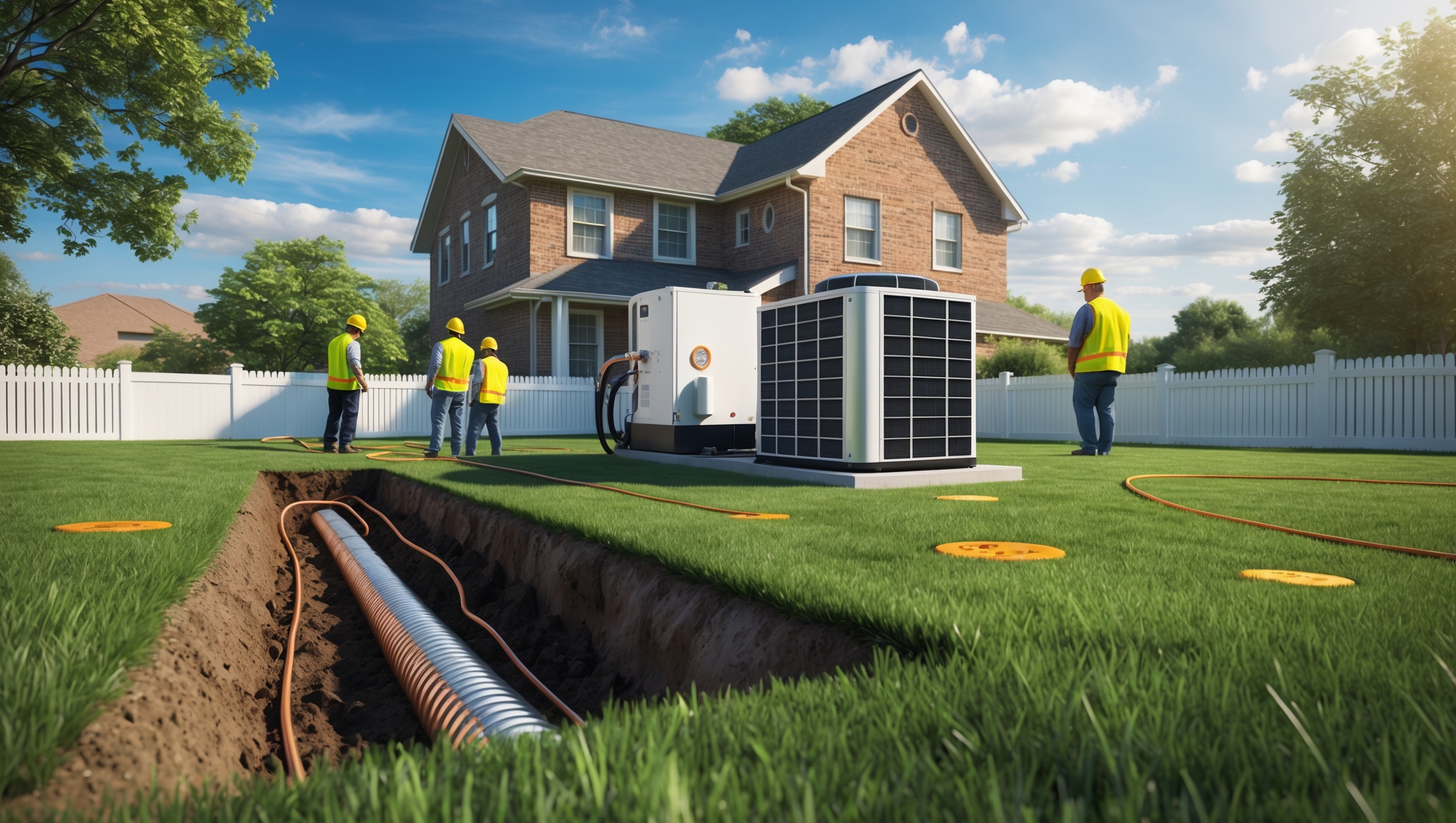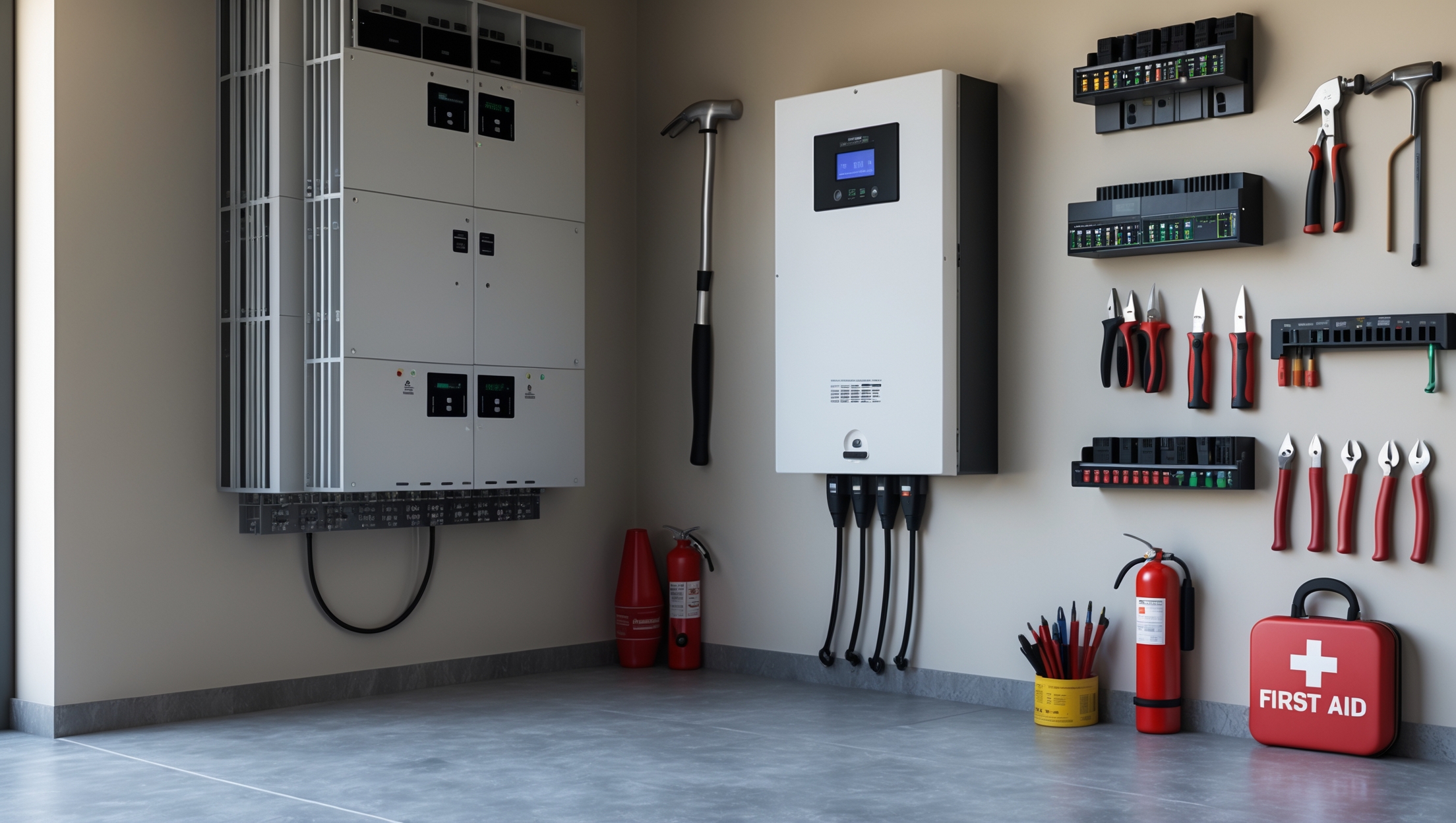Introduction: Why Compliance Matters for Home Geothermal Heat Pump Projects
Switching to a geothermal heat pump system is one of the most sustainable choices a homeowner can make. These systems use the stable temperature of the earth to provide efficient heating and cooling, dramatically reducing greenhouse gas emissions and utility bills. However, the path to a successful installation involves more than technical know-how and a desire to go green. Navigating the complex landscape of local building codes, permitting requirements, and utility coordination is essential—not only for legal compliance but also for system safety, optimal performance, and qualifying for incentives. Many homeowners underestimate the scope of paperwork, inspections, and stakeholder coordination involved, which can lead to costly delays or code violations. In this guide, we’ll walk you through the essential compliance steps and permitting processes unique to geothermal heat pump installations, demystify utility coordination, and offer practical strategies for a smooth project from start to finish.
Understanding Geothermal Heat Pump Systems
Types of Geothermal Systems
There are two primary types of residential geothermal heat pump systems:
- Closed-loop systems: These use a continuous loop of piping buried in the ground to circulate a heat-transfer fluid.
- Open-loop systems: These draw groundwater directly from a well or body of water, circulate it through the heat pump, and discharge it afterward.
The type you choose affects permitting requirements and compliance considerations. Closed-loop systems are more common for residential applications due to fewer environmental concerns and simpler permitting.
Why Compliance Is Critical
Installing a geothermal system involves excavation, potential groundwater interaction, and connection to your home’s HVAC and electrical systems. Each of these steps is regulated by local, state, and sometimes federal authorities. Non-compliance can lead to costly rework, fines, or denied incentive claims.
Step 1: Researching Local Codes and Zoning Laws
Contact Your Local Building Department Early
The first step in any geothermal project should be to contact your city or county building department. Local authorities interpret and enforce building codes, zoning ordinances, and environmental regulations. Ask for:
- Permitting requirements for geothermal heat pump installations
- Any special zoning restrictions (e.g., setbacks, easements, minimum lot size)
- Approved installer lists or licensing requirements
- Documentation or plans required for permit applications
Key Zoning and Environmental Considerations
Common issues that affect geothermal installations include:
- Property setbacks: Distance from property lines, public utilities, or structures
- Soil and groundwater protection: Restrictions in sensitive areas or floodplains
- Historic districts: Additional review for exterior or landscape modifications
- HOA rules: Homeowners’ Associations may require additional approval
Gather all relevant local documents and take detailed notes during your research—these will be crucial during the permitting process.
Step 2: Navigating the Permitting Process
Types of Permits Required
Most residential geothermal projects require several permits, often including:
- Building permit: Covers structural modifications, trenching, and installation of the heat pump unit
- Mechanical permit: Required for installing or modifying HVAC systems
- Plumbing permit: Necessary if the system interacts with groundwater or well water
- Electrical permit: Covers wiring, breakers, and electrical connections
- Environmental permit: Required in some jurisdictions for ground disturbance or water discharge (especially for open-loop systems)
Application Documentation
Typical documentation required includes:
- Site plan with proposed loop field and utility locations
- System specifications (manufacturer’s data sheets, capacity, efficiency ratings)
- Installer’s license and insurance documentation
- Engineering calculations (if required by your municipality)
- Proof of property ownership or HOA approval (if applicable)
Permit Fees and Timelines
Permit fees vary widely but can range from $200 to over $1,000 depending on your location and project complexity. Processing times typically range from a few days to several weeks. Plan ahead and submit complete, accurate documentation to avoid delays.
Step 3: Working with Qualified Installers
Why Licensed Installers Matter
Many jurisdictions require geothermal systems to be designed and installed by licensed professionals. This ensures compliance with codes, safety standards, and manufacturer warranties. Always verify your contractor’s credentials and experience with geothermal projects.
Installer Responsibilities in Compliance
- Preparing and submitting permit applications
- Coordinating with inspectors and utility representatives
- Adhering to all local, state, and federal regulations
Request a detailed contract that outlines who is responsible for each compliance and permitting step.
Step 4: Utility Coordination and Notifications
Why Coordinate with Your Utility?
Geothermal heat pumps may interact with your home’s existing electrical and utility services. Some utilities offer incentives or rebates for geothermal installations, but only if you comply with their program requirements—which often include formal notification, inspections, and pre-approval.
Typical Utility Requirements
- Load calculations: Demonstrating the new system’s electrical demand
- Pre-approval: Required for rebate or incentive eligibility
- Post-installation inspection: Utility verification before system startup
- Metering upgrades: Some utilities require a separate meter for geothermal systems
Contact your utility early and request a checklist of required documents and milestones for geothermal projects.
Step 5: Inspections, Documentation, and Closing Out Your Project
Inspection Stages
- Rough-in inspection: Checks trenching, loop field installation, and piping before backfilling
- Mechanical and electrical inspection: Verifies proper installation of the heat pump, wiring, and HVAC connections
- Final inspection: Confirms system operation, code compliance, and safe site restoration
Essential Documentation to Retain
- Approved permits and inspection reports
- System design and installation documentation
- Warranty and installer contact information
- Utility rebate or incentive paperwork
Keep these documents in a safe, accessible location. You’ll need them for future maintenance, resale, or warranty claims.
Special Considerations for Open-Loop Systems
Water Rights and Environmental Compliance
If you’re considering an open-loop geothermal system, additional compliance steps apply:
- Securing water rights or well permits
- Environmental impact review (especially for discharge into streams or wetlands)
- Well testing and reporting requirements
Consult your state’s Department of Natural Resources or Water Authority for specific regulations.
Discharge Permits
Discharging water from an open-loop system may require a National Pollutant Discharge Elimination System (NPDES) permit or similar state-level approval. Failure to obtain these permits can lead to heavy fines and system shutdown.
Common Pitfalls and How to Avoid Them
- Skipping the site survey: Unidentified underground utilities or soil issues can halt your project. Always perform a detailed site survey and call 811 before digging.
- Incomplete permit applications: Missing documents or unclear plans are the most common reasons for permit delays. Double-check requirements and submit a complete packet.
- Ignoring HOA or neighborhood covenants: These can override local codes and create costly setbacks if not addressed early.
- Not involving the utility until late: Early coordination prevents surprises with grid upgrades or meter requirements.
- Assuming incentives are automatic: Most rebates require pre-approval and compliance with specific installation standards.
Maximizing Incentives and Tax Credits
Federal Incentives
The U.S. federal government currently offers a tax credit for qualifying geothermal heat pump installations. To claim this credit, you must:
- Install a system that meets ENERGY STAR® requirements
- Retain all permits and compliance documentation
- File IRS Form 5695 with your tax return
State and Local Programs
Many states and municipalities offer additional rebates or low-interest loans for geothermal systems. These often have their own application and compliance requirements. Check the Database of State Incentives for Renewables & Efficiency (DSIRE) for up-to-date program listings.
Best Practices for a Smooth Compliance Journey
- Start research early and build a compliance checklist customized to your location
- Work with experienced, licensed geothermal installers familiar with local codes
- Document every step—permits, inspections, utility correspondence, and incentive approvals
- Communicate proactively with all stakeholders: building officials, utilities, HOAs, and neighbors
- Budget for permitting and inspection fees in your project estimate
Conclusion: Turning Compliance from Obstacle to Opportunity
While the compliance and permitting process for home geothermal heat pump installations can seem daunting, approaching it with preparation and the right mindset transforms it from a hurdle into an opportunity. Each permit, inspection, and utility coordination step is designed to protect your investment, ensure your system’s safety and efficiency, and safeguard local environmental resources. By researching your local codes, assembling complete documentation, and working with qualified professionals, you lay the groundwork for a successful, stress-free installation. Don’t view compliance as a bureaucratic formality—see it as a pathway to maximizing your energy savings, qualifying for valuable incentives, and securing peace of mind for years to come. In the evolving landscape of sustainable living and green technologies, a compliant geothermal installation isn’t just about following the rules—it’s about leading by example in your community. Start your project the right way, and you’ll enjoy decades of efficient, earth-friendly comfort powered by the steady warmth beneath your feet.





When it comes to getting permits for a closed-loop system, are there usually specific requirements about how deep the loops have to be, or does that vary a lot depending on local codes? I am in the early planning stages and want to avoid redesigns.
The required depth for closed-loop geothermal systems does vary significantly depending on local codes and soil conditions. Many jurisdictions set minimum depths, but the exact figures can differ, and some areas may also have regulations based on groundwater protection. It’s a good idea to contact your local permitting office early and ask for their specific requirements so you can design your system correctly from the start.
If my property is in a rural area with its own well, are there specific groundwater regulations I should be aware of before starting a geothermal installation?
Yes, properties with private wells in rural areas often face specific groundwater regulations when installing geothermal systems. You may need to get permits to drill or modify wells and ensure the geothermal system won’t contaminate your water source. It’s important to check with your local environmental or water resources agency for any rules on well spacing, depth, or water withdrawal limits before starting your project.
With all the paperwork and stakeholder coordination involved, are there professionals who specialize in managing the compliance side for homeowners, or is it expected that most people will handle permits and utility coordination themselves?
There are professionals, often called permit expediters or geothermal installation contractors, who specialize in managing compliance, permit paperwork, and utility coordination for homeowners. Many reputable geothermal companies include these services as part of their installation package, streamlining the process for you. However, some homeowners choose to handle the permits themselves, especially for smaller or simpler projects. It’s worth asking potential contractors what level of support they provide.